How do drum brakes work?
If you are new to older vehicle ownership, or perhaps picking up a spanner for the first time you may have never come across drum brakes before. Fitted predominantly to the rear of classic cars, although older classics also had them on the front, they still appear on smaller modern cars today. Whilst the design principle dates back to the early 20th century, they are perfectly adequate for day-to-day driving, even if they have become replaced by disc brakes as the go-to choice for manufacturers.
Allow us to explain what each component in the rear drum brake does, why it might fail, and what's involved in replacing it.
When were drum brakes fitted to VW and Porsche vehicles?
Drum brakes were standard fitment on both the front and rear axle on aircooled Volkswagens made before 1966. Even once launched in 1967, brake discs and calipers were reserved for specific models, and the commercial and camping Type 2 didn't get brake discs on the front until 1970 and T4 models still had drums fitted to the rear as standard up until 1996.
In Porsche circles, it was drums and shoes all the way until 1962 when front disc brakes were debuted on the Porsche 356B Carrera 2. In fact, this first version saw the caliper grip the disc from the inside, rather than externally allowing for a larger disc diameter to be fitted behind the wheel, but we'll explore the history of Porsche brakes another day.


How do drum brakes work?
In most cases, your drum brakes will be operated by hydraulic fluid being directed to each corner by pressing the brake pedal. Very early VW Beetles were fitted with cable-operated brakes, but we'll skirt around that anomaly for now and we'll cover how the handbrake functions in a separate blog post too.
There are a few main components you should be aware of when working on your drum brakes. They are: The brake drum, the brake shoes, the wheel cylinder and the backing plate.
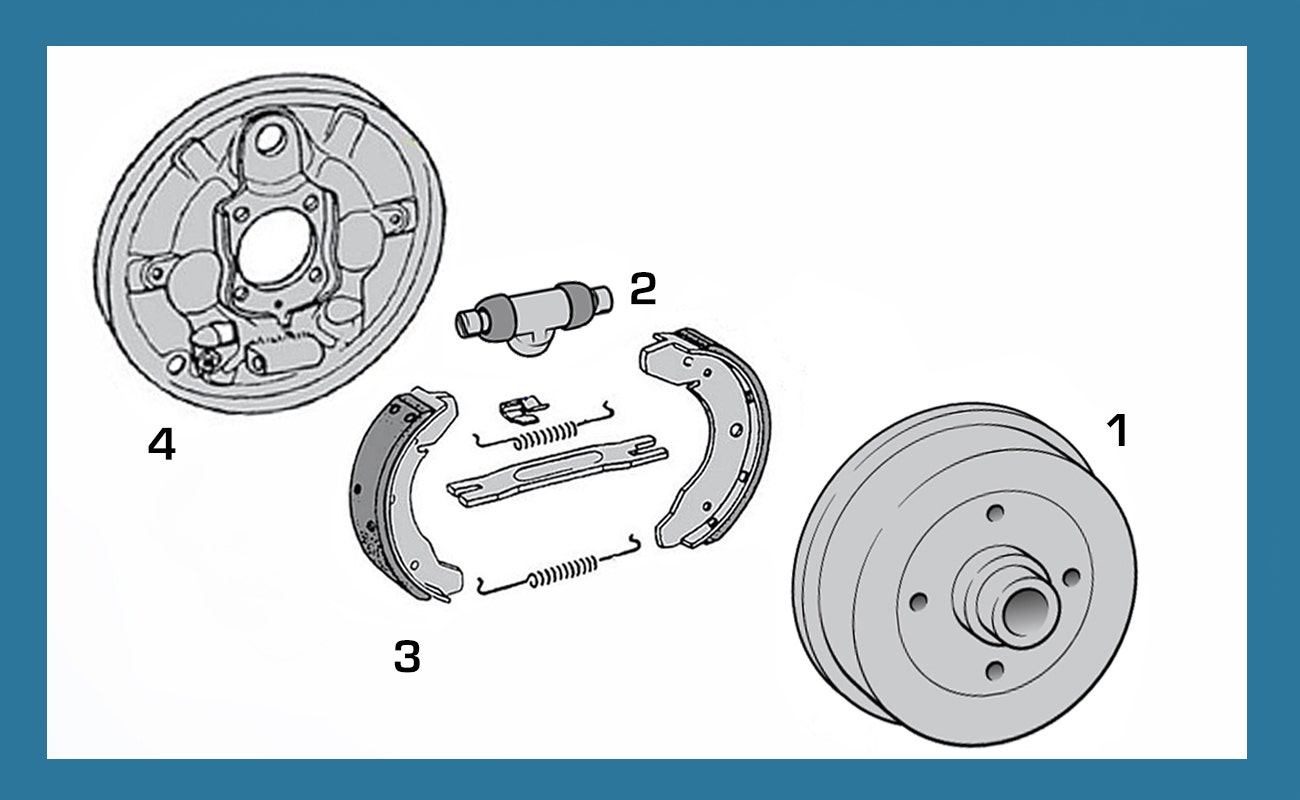

1. What does a brake drum do?
The brake drum will generally serve as the wheel mounting face as well as covering the brake internals and providing the surface for the brake shoes to push against. Available in many different diameters, it is critical that you order the correct size, but also the right stud pattern (PCD) for your vehicle too, otherwise they won't fit.
When renewing a brake drum it is beneficial to fit new wheel bearings at the same time, rather than try and transfer old bearings over and risk damaging them or getting dirt inside. We stock a great range from numerous manufacturers, including FORST, MEYLE, Febi, and FAG.
You can find our range of VW brake drums online here.


2. How does a wheel cylinder work?
The wheel cylinder contains a small piston, which is operated by hydraulic fluid. As the brake pedal is pressed down, so the fluid moves to each wheel cylinder and pushes the piston out. The wheel cylinder is mounted to the backing plate and positioned between the top or bottom of the brake shoes. As the piston pushes out, the brake shoes move out and up against the lining of the brake drum, creating friction and slowing the vehicle.
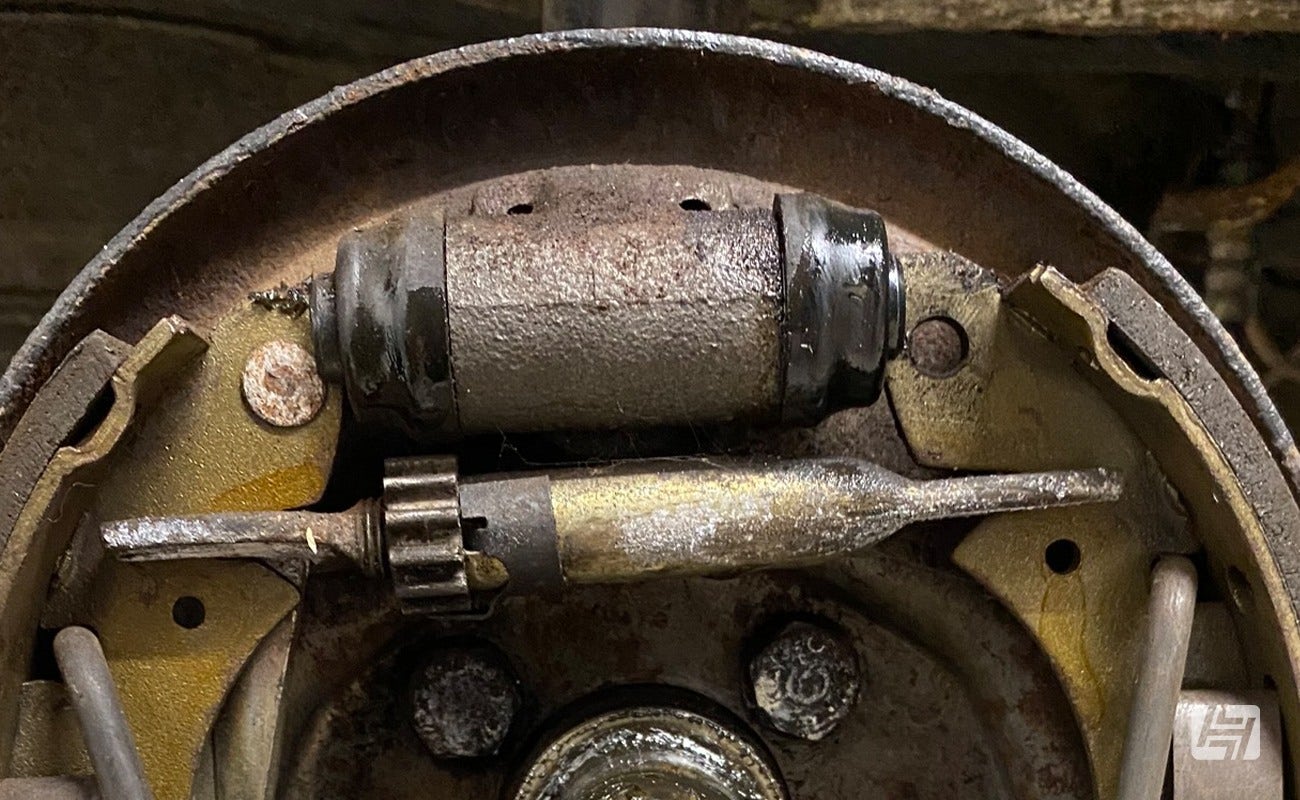

3. How do brake shoes stop a car?
Best described as banana-shaped, you will find two brake shoes fitted per side. They are held in place by the wheel cylinder, a distance bar of some sort, and also a series of springs that not only keep the tension across the shoes but also up against the backing plate.
The friction surface of your brake shoes is made from a grippy composite material to increase the braking effectiveness. However, this surface will wear away over time, eventually leaving you with just the metal crescent section resulting in a horrible metallic scraping noise, and causing damage to the drum lining each time the brake is applied.
Brake shoes are sold in sets of four, and should always be fitted to both sides at the same time to avoid uneven and unsafe braking performance.
Shop our range of FORST brake shoes here.
Brake shoes are held in place by a series of springs, which not only hold them together but also attach them to the backing plate. These are commonly sold as a brake shoe fitting kit, and we would recommend purchasing one of these at the same time as sourcing new brake shoes.
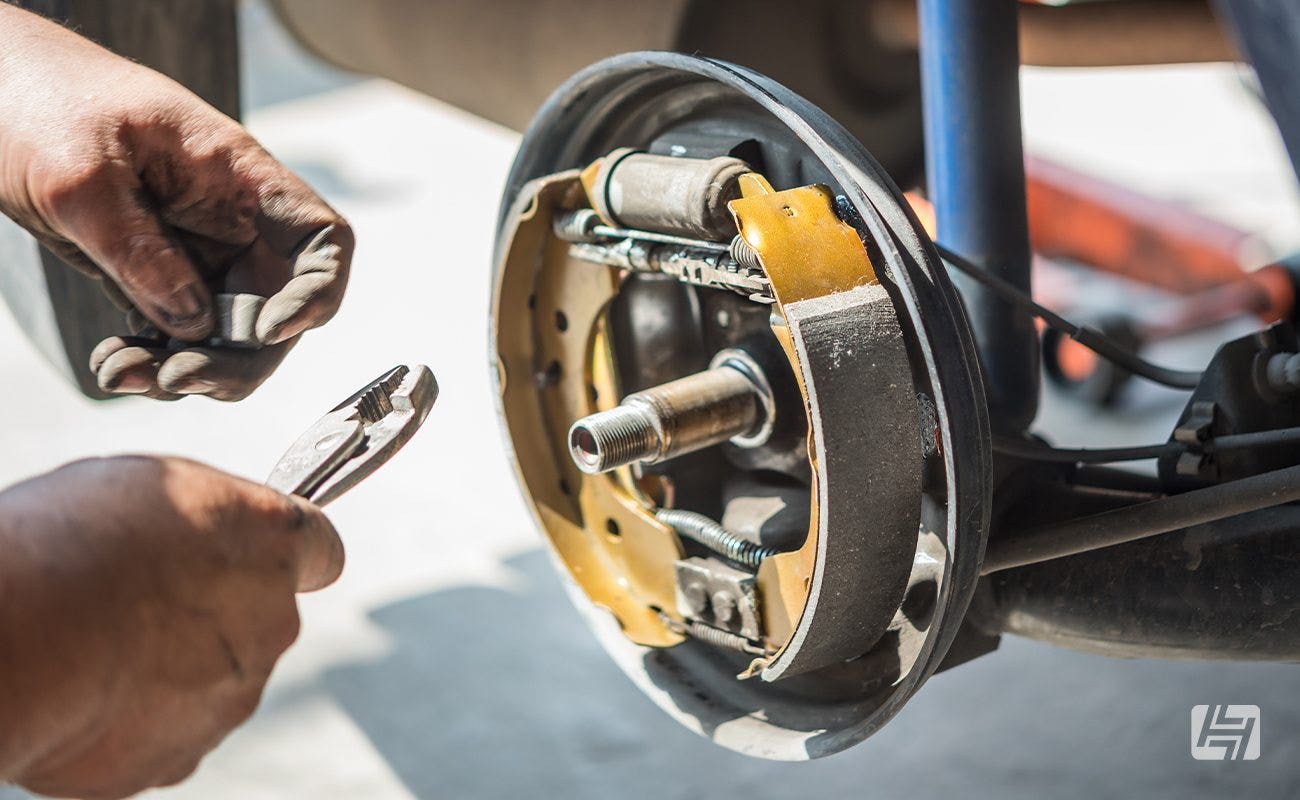

Adjusting your brake shoes
As the friction surface on the brake shoes wears, so the wheel cylinder will have to extend its pistons further to make contact with the brake drum lining. To assist with this, your brake shoes will be fitted with some kind of an adjuster. This will either be a threaded adjuster or an 'adjusting star' which will alter the resting position so they are closer to the brake drum, ensuring that maximum contact and stopping power is available when the pedal is pressed down.
If you are unsure of what type your vehicle has fitted, consult your manual, but it may be possible to do this adjustment with a thin flat-bladed screwdriver via an inspection hole in the brake drum, rather than removing the brake drum completely.
4. The role of a brake backing plate
The backing plate is a cleverly designed pressed piece of metal that has all the attachments for the brake shoes, springs, and wheel cylinder in place. Attaching to the hub of the vehicle, with the stub axle poking through the centre, they can suffer quite badly from corrosion, given their position on the car and the lack of cleaning they get in their lifetime. The good news is you can buy new brake backing plates for most models, and with a decent coat of paint, they'll last for many years to come.
You can find all of our brake drum backing plates online here.
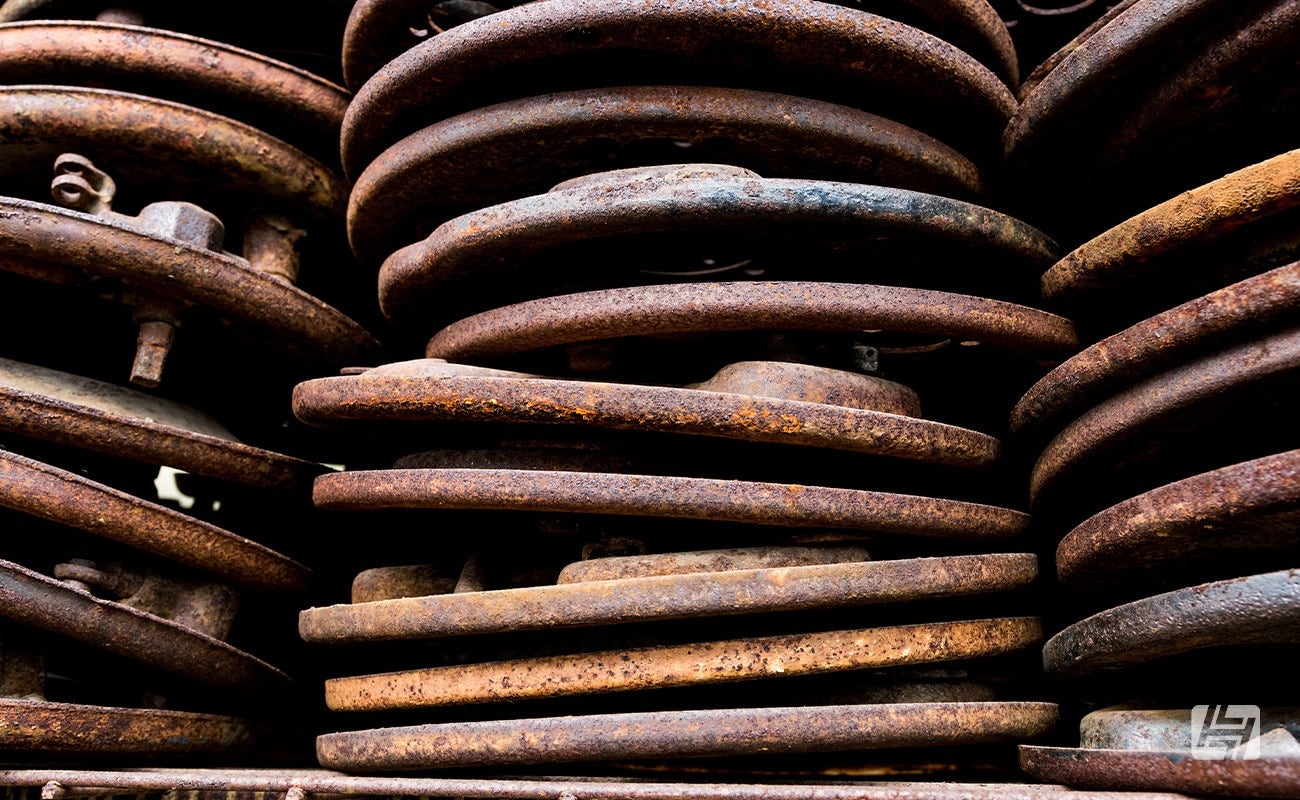

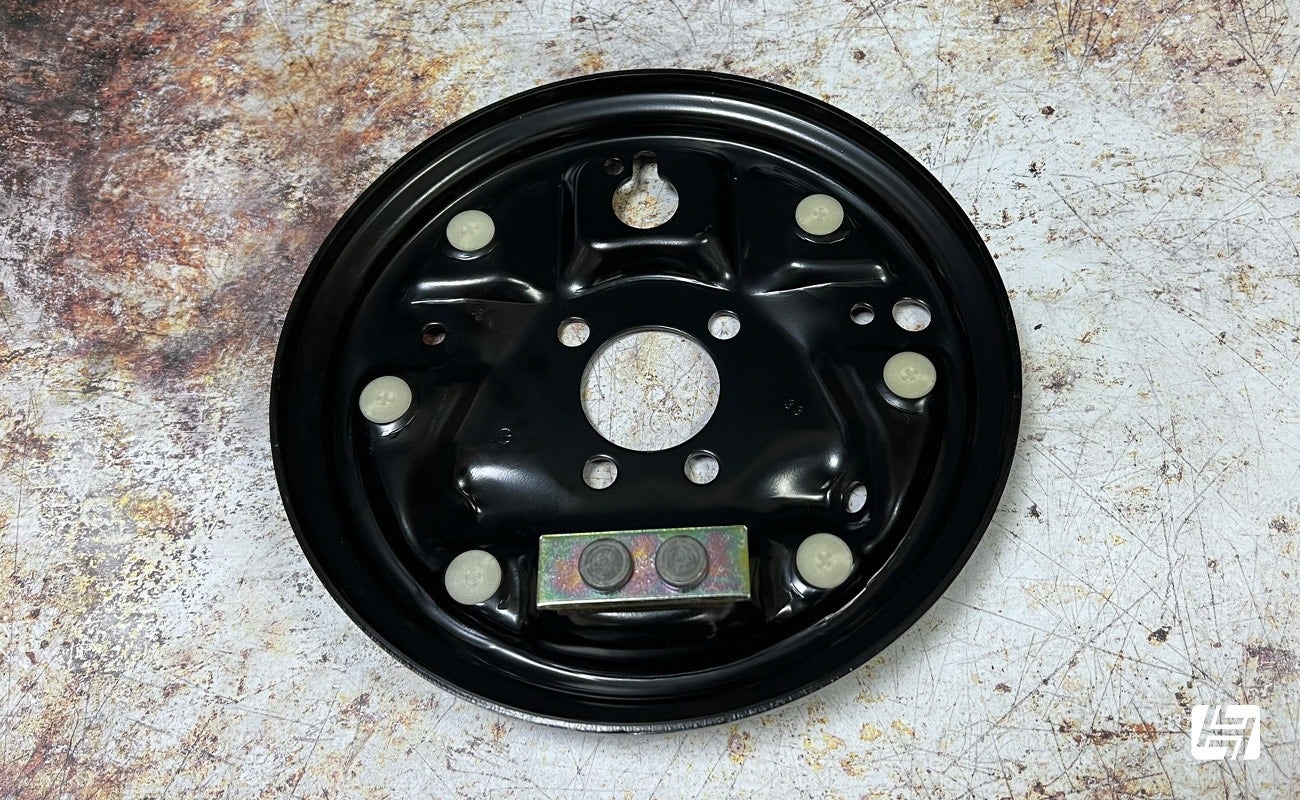

Hopefully, we have made the subject of brake drums and shoes a little clearer for you. Should you have any questions drop us an email help@heritagepartscentre.com or leave us a message in the comments section below.
Want to know more about brakes? We've also written articles on brake upgrades, brake fluid, and how ABS works.
Andy




 Bug
Bug
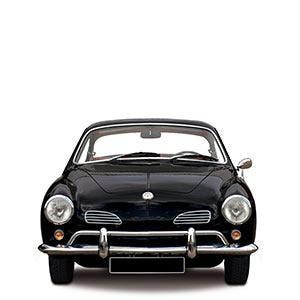 Karmann Ghia
Karmann Ghia
 Bay Bus
Bay Bus
 Vanagon
Vanagon
 Eurovan
Eurovan
 Transporter T5
Transporter T5
 Rabbit Mk1
Rabbit Mk1
 Golf Mk2
Golf Mk2


 911
911
 996
996
 997
997
 986 Boxster
986 Boxster
 987 Boxster
987 Boxster
 912
912
 944
944
 924
924






